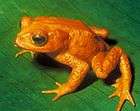Extinction vortex
Extinction vortices are a class of models through which conservation biologists, geneticists and ecologists can understand the dynamics of and categorize extinctions in the context of their causes. Developed by M. E. Gilpin and M. E. Soulé in their (now) famous 1986 paper Minimum viable populations: Processes of species extinction, there are currently four classes of extinction vortices.[1] The first two (R and D) deal with environmental factors that have an effect on the ecosystem or community level, such as disturbance, pollution, habitat loss etc. Whereas the second two (F and A) deal with genetic factors such as inbreeding depression and outbreeding depression, genetic drift etc.
Types of vortices
- R Vortex: The R vortex is initiated when there is a disturbance which facilitates a lowering of population size (N) and a corresponding increase in variability (Var(r)). This event can make populations vulnerable to additional disturbances which will lead to further decreases in population size (N) and further increases in variability (Var(r)). A prime example of this would be the disruption of sex ratios in a population away from the species optimum.
- D Vortex: The D vortex is initiated when population size (N) decreases and variability (Var(r)) increases such that the spatial distribution (D) of the population is increased and the population becomes "patchy" or fragmented. Within these fragments, local extinction rates increase which, through positive feedback, further increases D.
- F Vortex: The F vortex is initiated by a decrease in population size (N) which leads to a decrease in individual heterozygosity (an increase in autozygosity) and increases the rate of genetic drift, resulting in increased degrees of inbreeding depression and an increase in population genetic load, which over time will result in extinction.
- A Vortex: The A vortex is a result of an increase in genetic drift and a corresponding decrease in genetic variance which leads to a decrease in "population adaptive potential", and eventual extinction. This vortex can result from biological invasion, resulting in large scale hybridization and outbreeding depression.
See also
References
- ↑ Gilpin ME, Soulé ME (1986). "Minimum Viable Populations: Processes of Species Extinction". In M. E. Soulé. Conservation Biology: The Science of Scarcity and Diversity. Sinauer, Sunderland, Mass. pp. 19–34.
This article is issued from Wikipedia - version of the 3/19/2016. The text is available under the Creative Commons Attribution/Share Alike but additional terms may apply for the media files.
